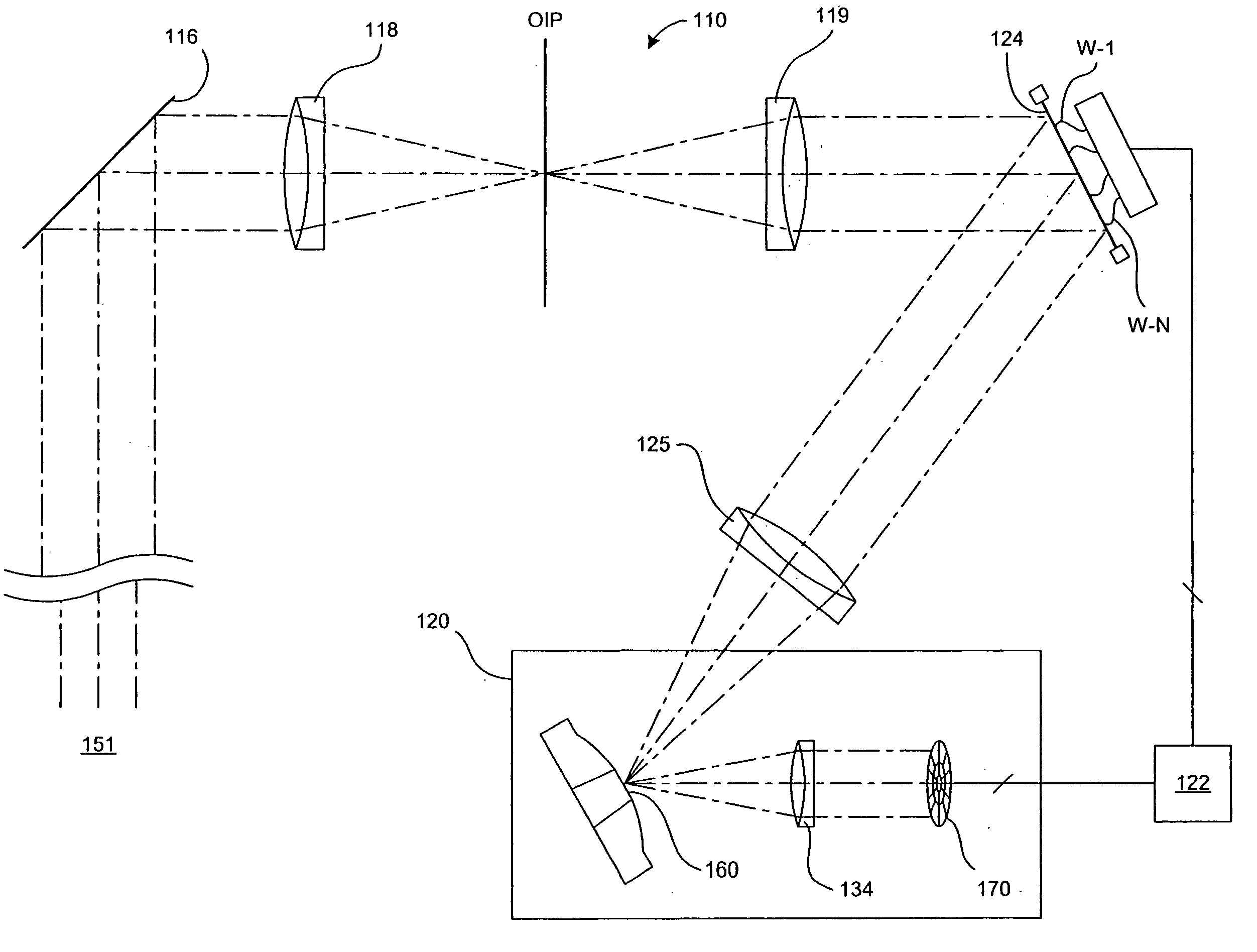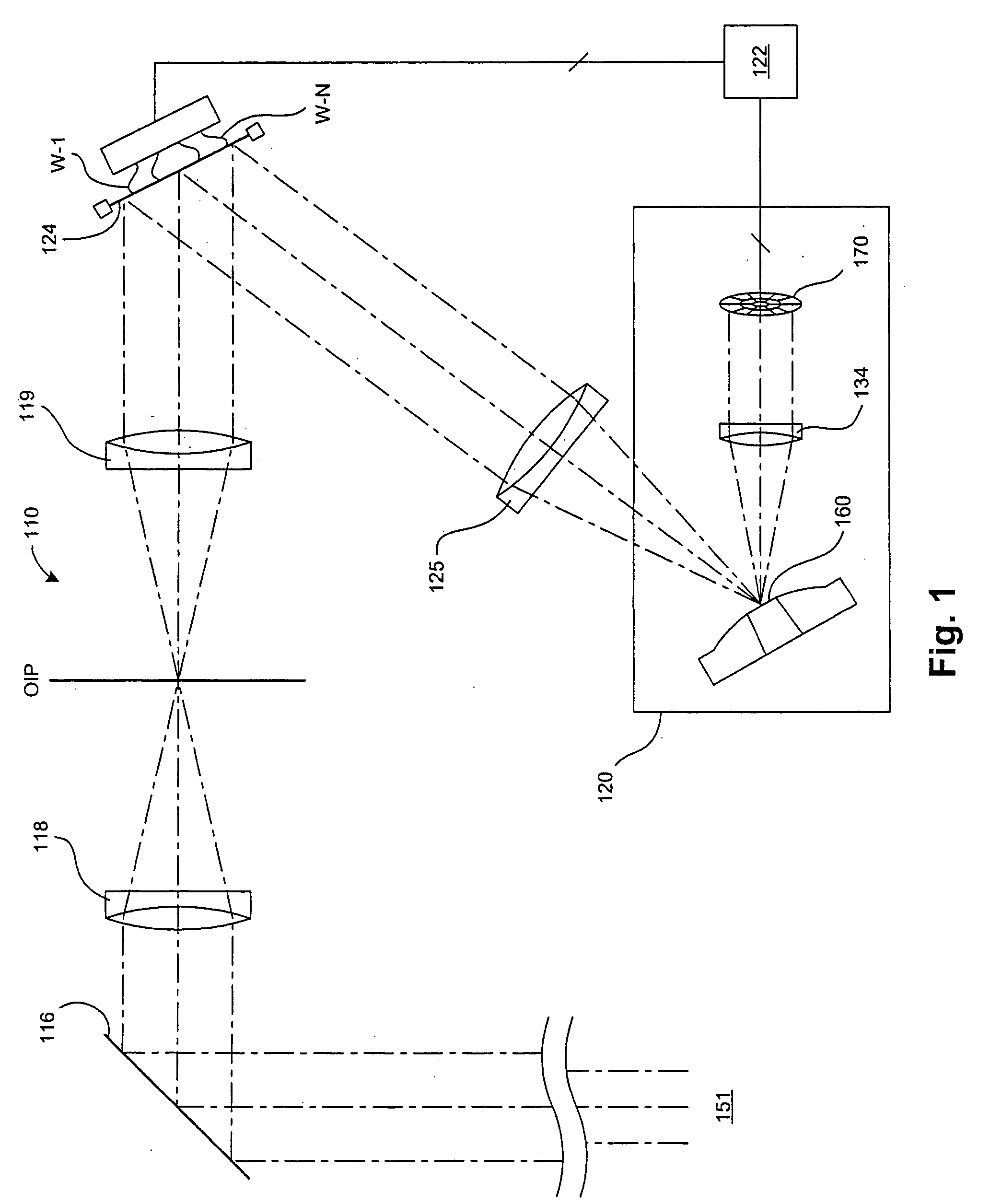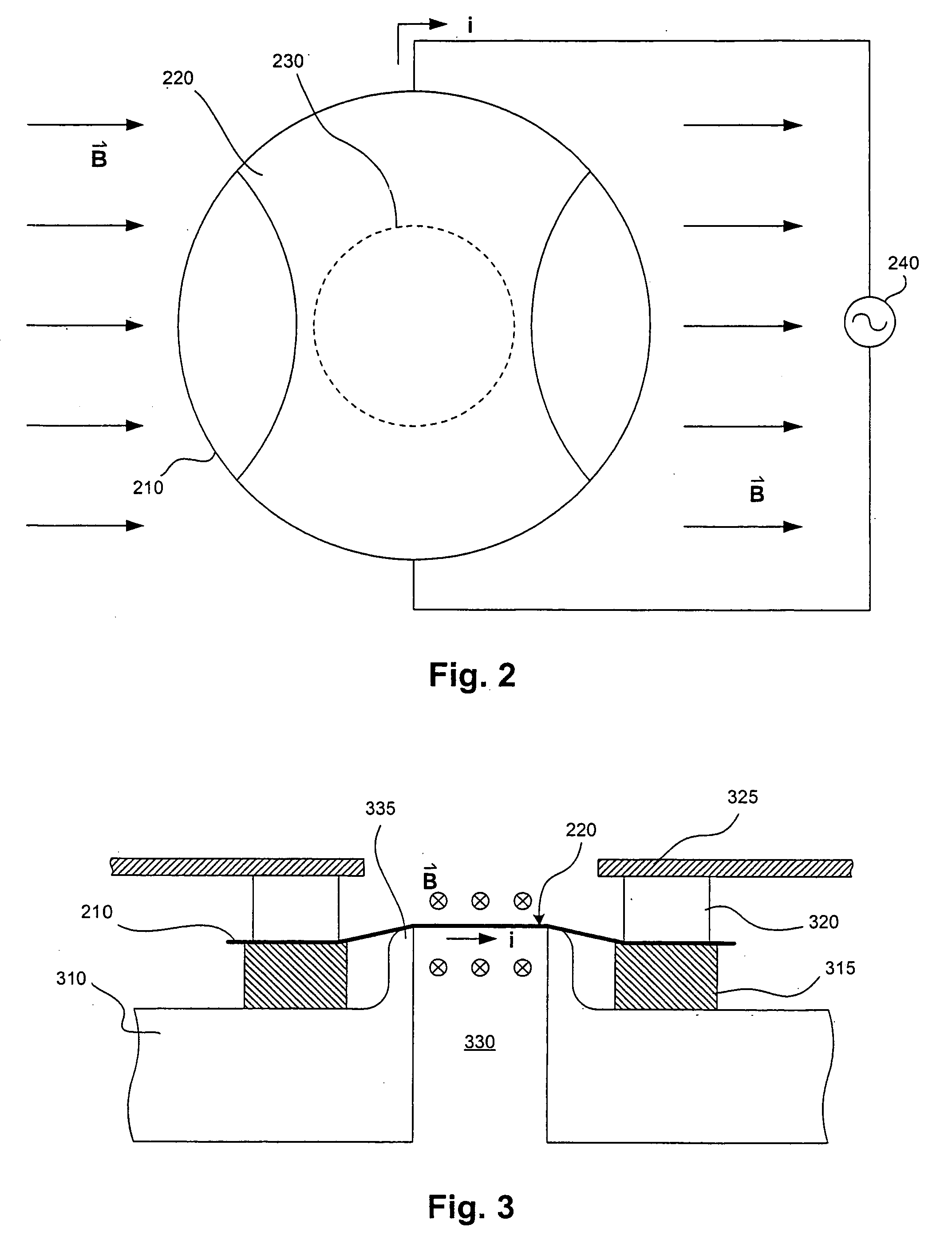Electromagnetically driven membrane mirror assembly
a membrane mirror and magnetoelectric technology, applied in the direction of optical elements, optical radiation measurement, instruments, etc., can solve the problems of affecting the accuracy, reliability, efficiency, and accuracy of free-space optical communication systems, and achieve the effect of avoiding deficiencies
- Summary
- Abstract
- Description
- Claims
- Application Information
AI Technical Summary
Benefits of technology
Problems solved by technology
Method used
Image
Examples
Embodiment Construction
[0019] In one embodiment of the present invention, a direct drive membrane mirror is provided for use in a wavefront sensor of an adaptive optics system. FIG. 1 illustrates a specific implementation of an adaptive optics system that incorporates a wavefront sensor with a direct drive membrane mirror. This system includes a telescope 110 with an adaptive optics module. Light rays 151 from a remote light source enter the system via a tip-tilt mirror 116. The system may further include data transmitter and receiver portions, neither of which is shown in FIG. 1 for clarity.
[0020] In one application, the receiving telescope 110 is designed to be positioned vertically. The tip-tilt mirror 116 can be pivoted about two perpendicular axes, one on the vertical axis of the telescope like a turret and the other horizontal in the plane of the mirror. In this way, the tip-tilt mirror 116 enables tip and tilt adjustments of the incoming light. As an alternative, the telescope 110 may be rotatable...
PUM
 Login to View More
Login to View More Abstract
Description
Claims
Application Information
 Login to View More
Login to View More - R&D
- Intellectual Property
- Life Sciences
- Materials
- Tech Scout
- Unparalleled Data Quality
- Higher Quality Content
- 60% Fewer Hallucinations
Browse by: Latest US Patents, China's latest patents, Technical Efficacy Thesaurus, Application Domain, Technology Topic, Popular Technical Reports.
© 2025 PatSnap. All rights reserved.Legal|Privacy policy|Modern Slavery Act Transparency Statement|Sitemap|About US| Contact US: help@patsnap.com



